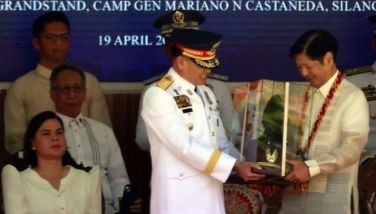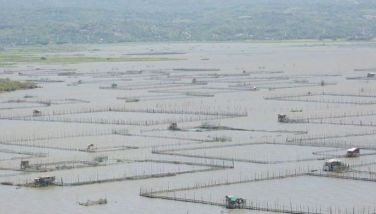#Journeyto30 The first headline
MANILA, Philippines – Twenty-three-year-old Stephen Salcedo was pronounced dead on arrival at the Philippine General Hospital in Manila around 5 p.m. of July 27, 1986. His death was caused by multiple concussions in the head and body.
He was rushed to the hospital after a group of Marcos loyalists ganged up on him and beat the life out of him near the Rizal Monument in Rizal Park. The STAR’s Ariel Antolin, as well as a number of other photographers from different newspapers, captured on film the moment Salcedo was beaten to death.
Witnesses said the loyalists attacked Salcedo after they saw him wearing a yellow T-shirt and flashing the “Laban” sign, both of which were symbols of then president Corazon Aquino, who came to power earlier that year after a bloodless revolution that toppled dictator Ferdinand Marcos.
The loyalists who congregated in the park were remnants of the July 6 coup, wherein former vice president and staunch Marcos supporter Arturo Tolentino, together with at least 490 armed soldiers and 5,000 Marcos loyalists, seized the nearby Manila Hotel and declared himself as the acting president of the country.
The coup only lasted until July 8. The putschists failed to attract public support and were forced to surrender to the authorities. While the Marcos loyalists who supported them were asked to quietly disperse, they came back to the park in the succeeding Sundays to denounce Aquino’s rule.
The July 27 rally of some 500 Marcos loyalists was held without a permit from the Manila City Hall and thus ordered dispersed. Just as the police began breaking up the rally, its ringleaders, lawyers Oliver Lozano and Benjamin Nuega, began shouting, “Gulpihin ninyo ang lahat ng mga Cory infiltrators. Sige, sige gulpihin ninyo! (Go ahead and beat up all Cory infiltrators).”
They began attacking anyone wearing yellow, including five Japanese tourists donning yellow sun visors as they strolled through the park.
When they converged again near the Chinese Garden, they came across actress and Marcos supporter Annie Ferrer who was jogging. They informed her of the dispersal, to which she responded, “Gulpihin ninyo ang mga Cory hecklers!”
It was at that point that they attacked Salcedo, who happened to be promenading at the park to spend what perhaps was the remaining days in Manila before going to Saudi Arabia for employment on Aug. 4.
The attack became The STAR’s headline – “Wear yellow and die” – in its inaugural issue on July 28, 1986. It reflected the socio-political atmosphere at that time when the country was divided between the “yellows” who supported the People Power Revolution and the loyalists who stood by Marcos’ autocratic rule despite his exile in Hawaii.
Prior to Salcedo’s fatal beating, the loyalists were seen as a mere embittered faction of society that failed to come to terms with the revolution’s outcome. With Salcedo’s death, it became clear what they were capable of, and thus, they became a serious threat to the stability of a restored democracy.
For STAR founder and publisher Betty Go-Belmonte, Salcedo’s death was an opportunity to show Marcos loyalists what the “yellows” are capable of – compassion and community.
As the loyalists sowed hatred in the streets and in the newspapers and radio stations they controlled, The STAR countered it by closely following Salcedo’s case. Photos of the mauling incident were posted on the front page to help identify and capture the perpetrators. It was able to track down and interview Salcedo’s widow in Sta. Mesa, Manila, giving readers a glimpse of the poor family that was left without a breadwinner because of foolhardy Marcos loyalists.
Moved by the widow’s plight, Belmonte decided to use her column Pebbles to call on compassionate Filipinos to help the bereaved family. Heeding her call, readers from all over Metro Manila and other parts of the country sent their financial donations, which Belmonte personally handed to Salcedo’s widow. Stephen’s mother Josephine personally went to The STAR to thank Belmonte for the support. Belmonte comforted the grieving mother and encouraged her to show strength amid their unfortunate situation.
The STAR’s coverage of the Salcedo case led to the arrest and filing of murder charges against eight individuals, namely Romeo Sison, Nilo Pacadar, Joel Tan, Richard de los Santos, Joselito Tamayo, Raul Billosos, Gerry Nery and Rolando Fernandez. Also charged as accomplices in the murder were Lozano, Nuega and Ferrer.
In 1995, the Supreme Court ruled in the case with finality, upholding a guilty verdict by the lower courts for Sison, Pacadar, Tan and de los Santos and sentencing them to life imprisonment. It also upheld the guilty verdict against Tamayo for the crime of homicide, sentencing him to 12 to 20 years imprisonment. The high court also ordered the accused to pay Salcedo’s family for actual and moral damages as well as indemnity. The courts acquitted Billosos, Nery, Fernandez, Lozano, Nuega and Ferrer.
In its coverage of the Salcedo case, The STAR showed what made it distinct from other newspapers at that time: a newspaper that combines journalism and advocacy.
It was a distinction that the newspaper continued to exhibit even after the Salcedo case, through its coverage of natural and man-made disasters and its corporate social responsibility activities. As such, it made a name for itself as a newspaper that shines a light on pressing issues and actually makes a difference, by empowering and encouraging readers to act, thus enabling them to make a difference. And it continues to do so today.
It is a newspaper that lives up to its name – the country’s beacon, The Philippine STAR.
- Latest
- Trending



























